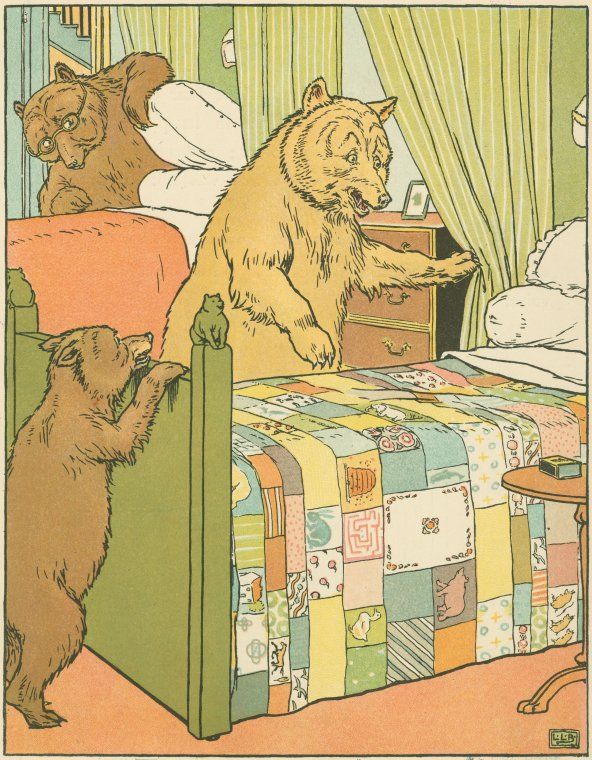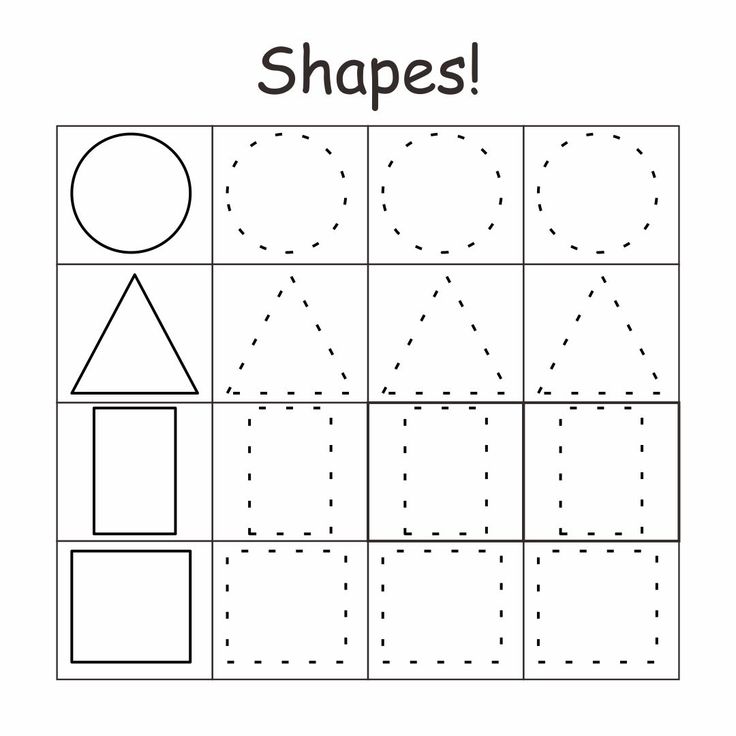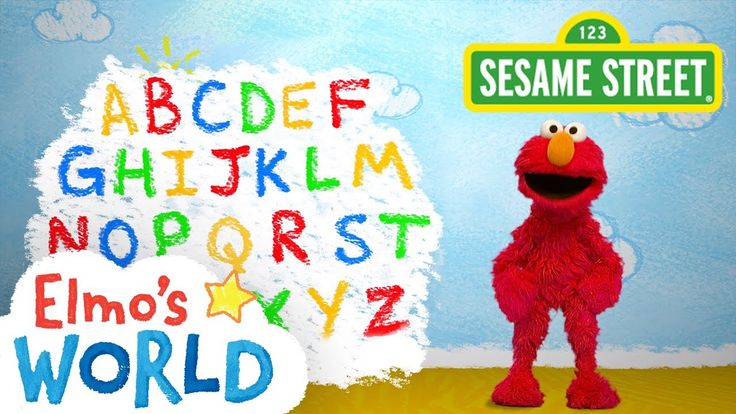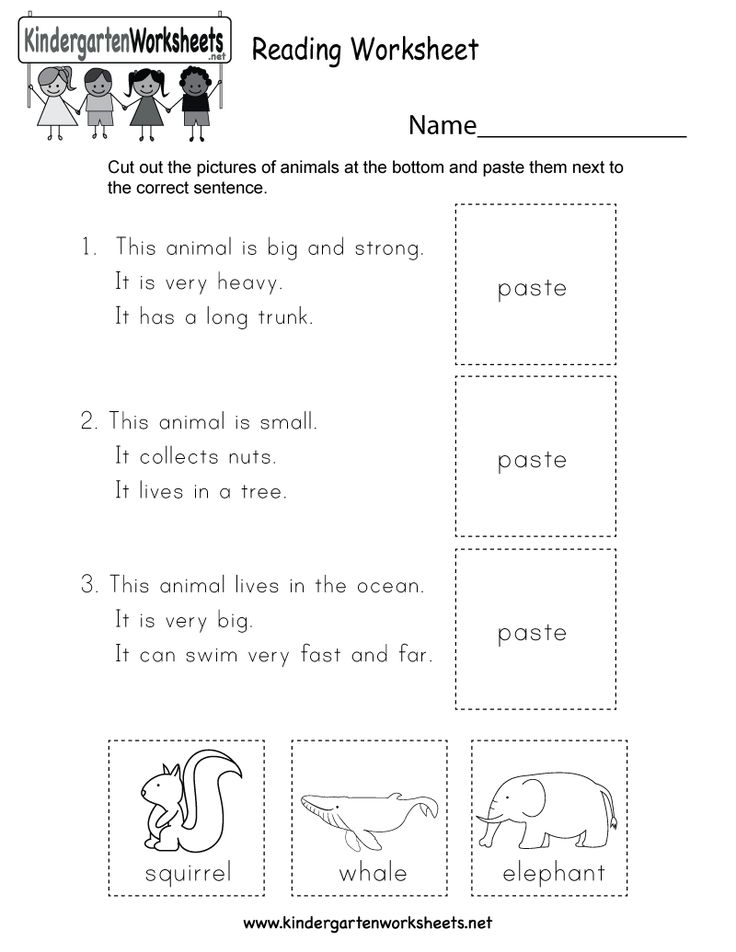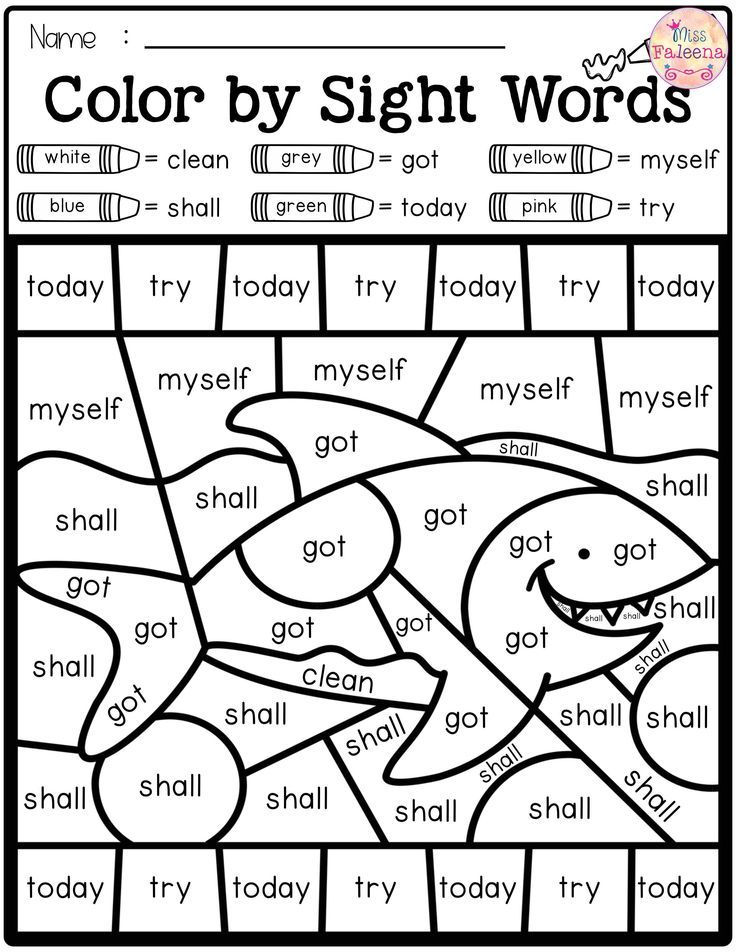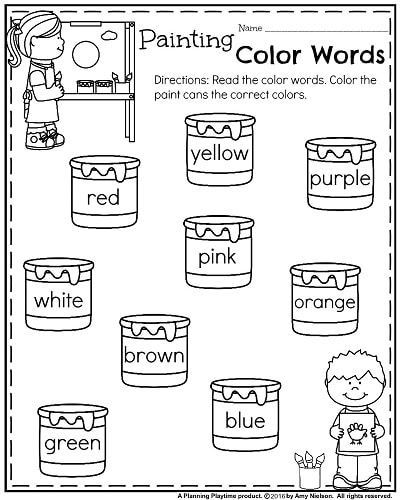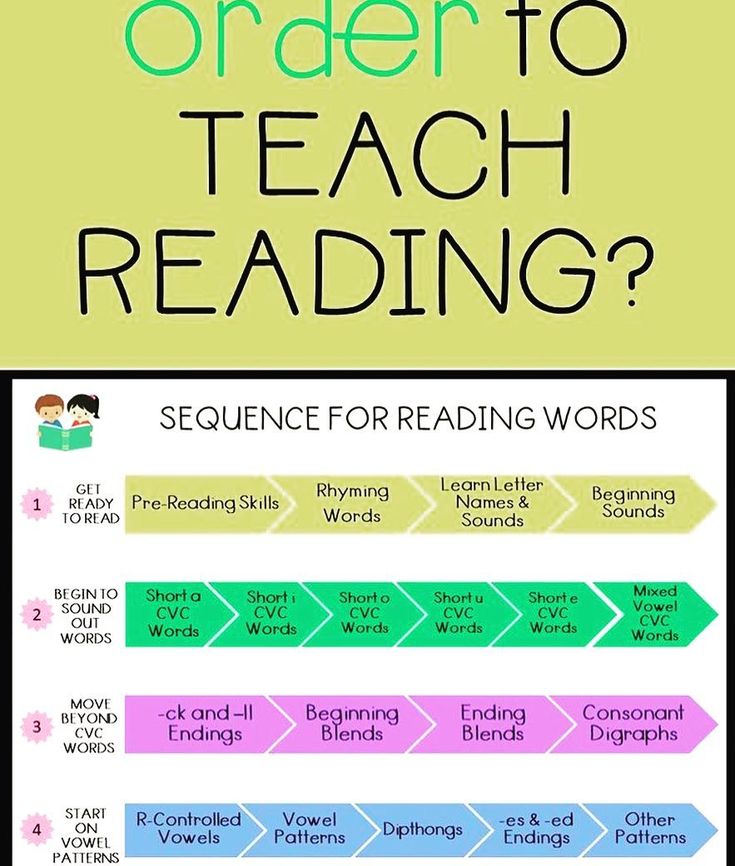Story of 3 bears
Goldilocks and the Three Bears
seek 00.00.00 00.00.00 loading- Download
Picture by Bertie - a retake of the classic illustration by Walter Crane.
Duration 3:15.
Based on the Charming version by the Victorian writer Andrew Lang.
Read by Natasha.
Once upon a time there were three bears, who lived together in a house of their own in a wood. One of them was a little, small wee bear; one was a middle-sized bear, and the other was a great, huge bear.
One day, after they had made porridge for their breakfast, they walked out into the wood while the porridge was cooling. And while they were walking, a little girl came into the house. This little girl had golden curls that tumbled down her back to her waist, and everyone called her by Goldilocks.
Goldilocks went inside. First she tasted the porridge of the great, huge bear, and that was far too hot for her. And then she tasted the porridge of the middle bear, and that was too cold for her. And then she went to the porridge of the little, small wee bear, and tasted that. And that was neither too hot nor too cold, but just right; and she liked it so well, that she ate it all up.
Then Goldilocks went upstairs into the bed chamber and first she lay down upon the bed of the great, huge bear, and then she lay down upon the bed of the middle bear and finally she lay down upon the bed of the little, small wee bear, and that was just right. So she covered herself up comfortably, and lay there until she fell fast asleep.
By this time, the three bears thought their porridge would be cool enough, so they came home to breakfast.
“SOMEBODY HAS BEEN AT MY PORRIDGE!” said the great huge bear, in his great huge voice.
“Somebody has been at my porridge!” said the middle bear, in his middle voice.
Then the little, small wee bear looked at his, and there was the spoon in the porridge pot, but the porridge was all gone.
“Somebody has been at my porridge, and has eaten it all up!” said the little, small wee bear, in his little, small wee voice.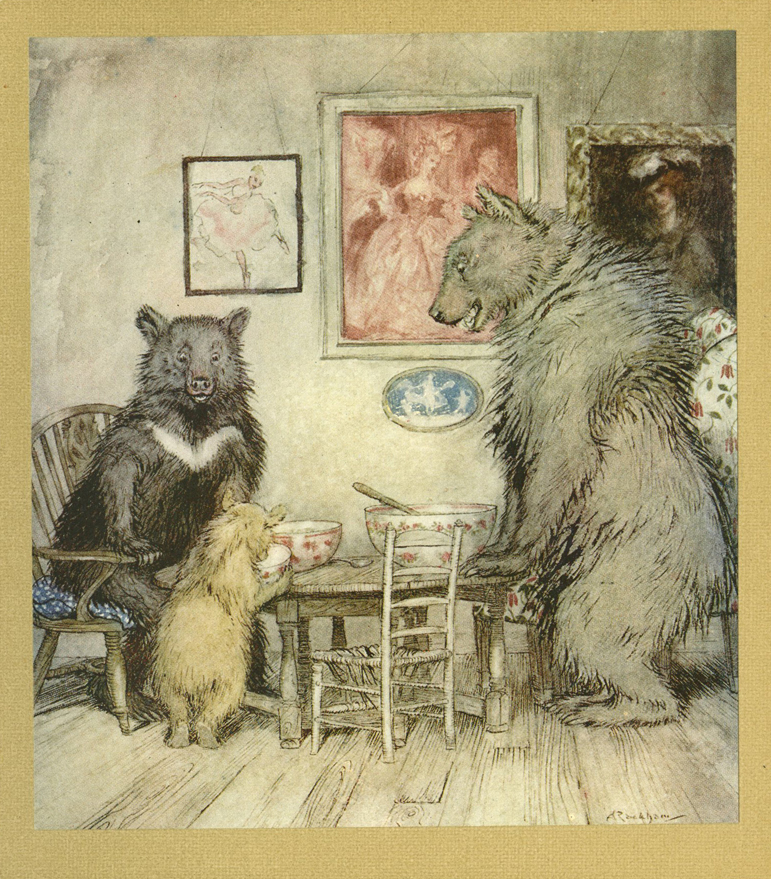
Then the three bears went upstairs into their bedroom.
“SOMEBODY HAS BEEN LYING IN MY BED!” said the great, huge bear, in his great, rough, gruff voice.
“Somebody has been lying in my bed!” said the middle bear, in his middle voice.
And when the little, small, wee bear came to look at his bed, upon the pillow there was a pool of golden curls, and the angelic face of a little girl snoring away, fast asleep.
“Somebody has been lying in my bed, and here she is!” Said the little, small wee bear, in his little, small wee voice.
Goldilocks jumped off the bed and ran downstairs, out of the door and down the garden path. She ran and she ran until she reached the house of her grandmama. When she told her grandmama about the house of the three bears who lived in the wood, her granny said: “My my, what a wild imagination you have, child!”
(Updated with shorter version September, 13, 2016).
Goldilocks and the Three Bears ~ Bedtime Stories for Kids
Thanks to Artist, yehachan
This is the fairy tale story of Goldilocks and the Three Bears with a modern twist.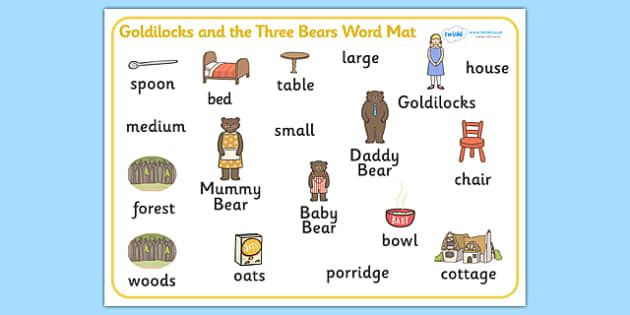 It is brought to you by Stories to Grow by. Check out our other great stories!
It is brought to you by Stories to Grow by. Check out our other great stories!
Listen to the story while you read along!
Once upon a time a girl named Goldilocks lived in a house at the edge of the woods. In those days curls of hair were called "locks." She was "Goldilocks" because golden hair ran down her head and shoulders.
One morning Goldilocks was out for a walk when she came across a beautiful bird. She followed that bird right into the woods, where her mother had said many times she must never go. But Goldilocks didn’t think of that.
Thanks to Artist, JoannaPasek
Deeper and deeper into the woods she went. But where was the bird? It was nowhere to be seen. Goldilocks looked around. That's when she knew she was lost.
But a house was not far away. “I wonder who lives there,” she thought, "so deep into the woods." She went up and knocked on the door. No answer. She knocked again. Still no answer. Goldilocks knocked a third time and the door opened. But no one was behind the door.
No answer. She knocked again. Still no answer. Goldilocks knocked a third time and the door opened. But no one was behind the door.
“Well, the door is already open,” said the girl. “So I may as well go in.”
Goldilocks smelled a wonderful smell, and soon knew why. On the table were three steaming bowls of oatmeal. All of a sudden she realized how very hungry she was.
What Goldilocks did not know, however, is that three bears lived in this house. In fact, that very morning the three bears had sat down to their bowls of oatmeal but the cereal was too hot. So they had decided to take a short walk. They said to each other, "By the time we return home our oatmeal will be perfect."
Gazing at the steaming bowls of oatmeal, Goldilocks thought, “I'm sure whoever lives here won’t mind if I take just one sip.” She sat at the first chair and took a sip. “Ah!” she said, “it is too hot.”
She moved to the next bowl and took a sip. “Ah!” she said, “it is too cold.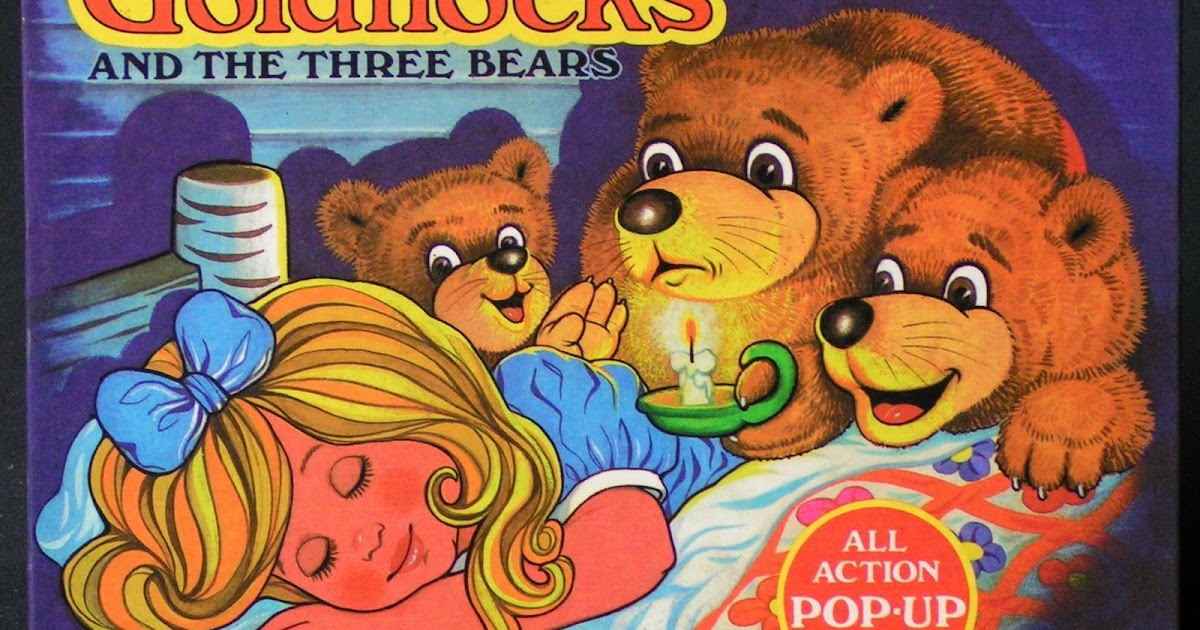 ”
”
Thanks to Artist, JoannaPasek
She moved to the third bowl and took a sip. “It is just right!” And before she knew it, the oatmeal was all gone.
Goldilocks rubbed her tummy. “I'm full! I must find somewhere to sit that's more comfortable.”
She went to the living room. Three chairs were lined up in a row – one big chair, one medium-sized chair, and a wee little chair.
“I'm sure whoever lives here will not mind if I sit on just one chair,” said Goldilocks. She sat on the big chair, but it was too hard.
“The next chair looks good,” said Goldilocks. She moved to the medium-sized chair, but it was too soft.
“The wee little chair looks better,” said the girl. She sat on the little chair and it was just right! But when Goldilocks leaned back a bit, the chair broke into a dozen pieces. She plopped right on the floor.
“Oh, no!” Goldilocks wailed. Then she yawned. There must be somewhere she could lie down for a short nap.
There must be somewhere she could lie down for a short nap.
The girl saw a ladder and climbed it to an attic. In a row, three beds were lined up – one big bed, one medium-sized bed, and a wee little bed.
“I'm sure whoever lives here won’t mind if I lay down for just a short nap,” she said. She laid down on the big bed but it was too hard. She laid down on the medium-sized bed but it was too soft. The girl laid down on the wee little bed, and it was just right! As her head hit the pillow, Goldilocks was fast asleep.
Just then, the three bears came home from their walk. "Oh, my!" said Mama Bear. “Did either of you leave the front door open?”
“Not I,” said Papa Bear.
"Not I," said Little Bear.
Slowly the three bears stepped inside and looked around.
“Most odd!” said Papa Bear, seeing his spoon in his bowl. “Someone has been eating my oatmeal!”
“Most odd indeed!” said Mama Bear, also seeing her spoon in her bowl. “Someone has been eating my oatmeal!”
“Someone has been eating my oatmeal!”
“This is the most odd of all!” said Little Bear. “Someone has been eating my oatmeal and they ate it all up!”
The three bears were very surprised, as you can imagine. With care, they stepped into their living room.
“Do you think someone was sitting in my chair?” said Papa Bear.
“I know someone was sitting in my chair,” said Mama Bear, “because I can see the seat cushion is pushed down.”
“And I know someone was sitting in my chair!” said Little Bear. “Because it’s all broken!”
Thanks to Artist, Joannapasek
The three bears were even more surprised at that! They climbed the ladder to their attic.
“Someone has been sleeping on my bed,” said Papa Bear, who could see that his blankets were moved.
“Someone has been sleeping on my bed, too,” said Mama Bear, who could also see that her blankets were moved.
“Someone has been sleeping on my bed,” said Little Bear.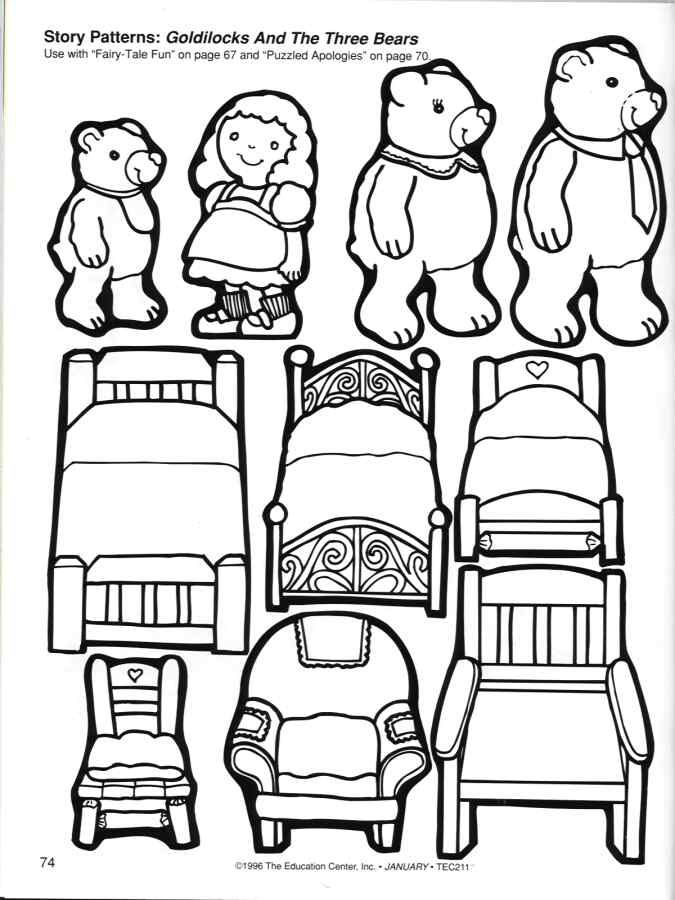 “And look - she is still there!”
“And look - she is still there!”
Goldilocks bolted awake. Three bears were looming over her, and they did not look happy.
Thanks to Artist, Joannapasek
“Oh my!” said Goldilocks, jumping out of bed. As quick as she could, she climbed down the ladder and ran out the front door.
Little Bear chased after her. "Wait, please!"
Goldilocks stopped and turned around.
"Tell me," said Little Bear, “Why did you come inside our house?”
“I guess I didn’t think–,“ said Goldilocks.
“And why did you eat my oatmeal?” said Little Bear.
“Well I guess I didn’t think–,“ said Goldilocks.
“And why did you break my chair and sleep in my bed?” said Little Bear.
“Well I guess I didn’t think about that, either,” said Goldilocks.
They were silent.
Goldilocks said, “I suppose I could have waited outside your door.”
“We were coming right home,” said Mama Bear. "We might have invited you in if we knew you were hungry."
"We might have invited you in if we knew you were hungry."
“I’m sorry about the chair,” said Goldilocks. “I guess you saw it broke.”
"Yep," said Mama Bear with a frown.
“I’m good at fixing things,” said Goldilocks, “If you have glue.”
“Of course we have glue!” said Papa Bear. “What kind of bears do you think we are?”
“I will make it up to you!” said Goldilocks.
“Come on in then, dear,” said Mama Bear.
“We'll start over,” said Papa Bear with a nod.
“Come in, come in!” said Little Bear, jumping up and down.
With smiles, they skipped together inside the Bear’s house.
The story of the fairy tale about three bears
Modern folklorists trace the roots of the English version of the fairy tale to the similar Scottish fairy tale about three bears and a cunning fox. Having climbed into the house of bears and played pranks there, the fox fell asleep in the bed of the smallest bear, was caught there by the returning owners and was forced to flee. In the tale, his name is simply "sly fox." In John Batten's "returned to the roots" version of the tale in 1894, the fox is named English. Scrapefoot (Scratchy). nine0003
In the tale, his name is simply "sly fox." In John Batten's "returned to the roots" version of the tale in 1894, the fox is named English. Scrapefoot (Scratchy). nine0003
Scrapefoot
ONCE upon a time, there were three Bears who lived in a castle in a great wood. One of them was a great big Bear, and one was a middling Bear, and one was a little Bear. And in the same wood there was a Fox who lived all alone, his name was Scrapefoot. Scrapefoot was very much afraid of the Bears, but for all that he wanted very much to know all about them. And one day as he went through the wood he found himself near the Bears' Castle, and he wondered whether he could get into the castle. He looked all about him everywhere, and he could not see any one. So he came up very quietly, till at the last he came up to the door of the castle, and he tried whether he could open it. Yes! the door was not locked, and he opened it just a little way, and put his nose in and looked, and he could not see any one. So then he opened it a little way farther, and put one paw in, and then another paw, and another and another, and then he was all in the Bears' Castle. He found he was in a great hall with three chairs in it—one big, one middling, and one little chair; and he thought he would like to sit down and rest and look about him; so he sat down on the big chair. But he found it so hard and uncomfortable that it made his bones ache, and he jumped down at once and got into the middling chair, and he turned round and round in it, but he couldn't make himself comfortable. So then he went to the little chair and sat down in it, and it was so soft and warm and comfortable that Scrapefoot was quite happy; but all at once it broke to pieces under him and he couldn't put it together again! So he got up and began to look about him again, and on one table he saw three saucers, of which one was very big, one was middling, one was quite a little saucer. Scrapefoot was very thirsty, and he began to drink out of the big saucer.
So then he opened it a little way farther, and put one paw in, and then another paw, and another and another, and then he was all in the Bears' Castle. He found he was in a great hall with three chairs in it—one big, one middling, and one little chair; and he thought he would like to sit down and rest and look about him; so he sat down on the big chair. But he found it so hard and uncomfortable that it made his bones ache, and he jumped down at once and got into the middling chair, and he turned round and round in it, but he couldn't make himself comfortable. So then he went to the little chair and sat down in it, and it was so soft and warm and comfortable that Scrapefoot was quite happy; but all at once it broke to pieces under him and he couldn't put it together again! So he got up and began to look about him again, and on one table he saw three saucers, of which one was very big, one was middling, one was quite a little saucer. Scrapefoot was very thirsty, and he began to drink out of the big saucer.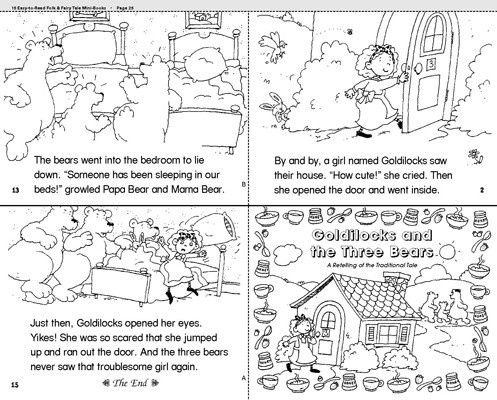 But he only just tasted the milk in the big saucer, which was so sour and so nasty that he would not another taste drop of it. Then he tried the middling saucer, and he drank a little of that. He tried two or three mouthfuls, but it was not nice, and then he left it and went to the little saucer, and the milk in the little saucer was so sweet and so nice that he went on drinking it till it was all gone. nine0003
But he only just tasted the milk in the big saucer, which was so sour and so nasty that he would not another taste drop of it. Then he tried the middling saucer, and he drank a little of that. He tried two or three mouthfuls, but it was not nice, and then he left it and went to the little saucer, and the milk in the little saucer was so sweet and so nice that he went on drinking it till it was all gone. nine0003
Then Scrapefoot thought he would like to go upstairs; and he listened and he could not hear any one. So upstairs he went, and he found a great room with three beds in it; one was a big bed, and one was a middling bed, and one was a little white bed; and he climbed up into the big bed, but it was so hard and lumpy and uncomfortable that he jumped down again at once, and tried the middling bed. That was rather better, but he could not get comfortably in it, so after turning about a little while he got up and went to the little bed; and that was so soft and so warm and so nice that he fell fast asleep at once. nine0003
nine0003
And after a time the Bears came home, and when they got into the hall the big Bear went to his chair and said
"WHO'S BEEN SITTING IN MY CHAIR?" and the middling Bear said. "WHO'S BEEN SITTING IN MY CHAIR?" and the little Bear said, "Who's been sitting in my chair and has broken it all to pieces?" And then they went to have their milk, and the big Bear said, "WHO'S BEEN DRINKING MY MILK?" and the middling Bear said, WHO'S BEEN DRINKING MY MILK?" and the little Bear said, "Who's been drinking my milk and has drunk it all up?" Then they went upstairs and into the bedroom, and the big Bear said, "WHO'S BEEN SLEEPING IN MY BED?" and the middling Bear said, "WHO'S BEEN SLEEPING IN MY BED?" and the little Bear said, "Whos been sleeping in my bed?—and see here he is!" So then the Bears came and wondered what they should do with him; and the big Bear said, "Let's hang him!" and then the middling Bear said, "Let's drown him!" and then the little Bear said, "Let's throw him out of the window. " nine0013
" nine0013
And then the Bears took him to the window, and the big Bear took two legs on one side and the middling Bear took two legs on the other side, and they swung him backwards and forwards, backwards and forwards, and out of the window. Poor Scrapefoot was so frightened, and he thought every bone in his body must be broken. But he got up and shook first one leg—no, that was not broken; and then another, and that was not broken; and another and another, and then he wagged his tail and found there were no bones broken. So then he galloped off home as fast as he could go, and never went near the Bears' Castle again. nine0003
The tale was introduced into literary tradition in 1837 by Robert Southey as "The Story of the Three Bears"[5]. In his version, the protagonist is not a fox, but a “little old woman” (a little old Woman) with a hooligan character, somewhat reminiscent of Shapoklyak. There is an assumption [3] that Southey heard this story in childhood from his uncle William Tuller and understood English as a child.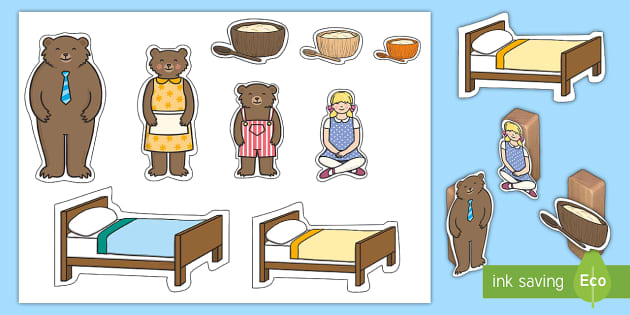 vixen (fox) in its figurative English meaning "extremely grumpy woman". This, however, does not explain why he made her an old woman. nine0003
vixen (fox) in its figurative English meaning "extremely grumpy woman". This, however, does not explain why he made her an old woman. nine0003
The Story of the Three Bears
From Robert Southey's "The Doctor."
"A tale which may content the minds of learned men and grave philosophers." Gascoyne
Once upon a time there were Three Bears who lived together in a house of their own in a wood. One of them was a Little Small Wee Bear, and one was a Middle-sized Bear, and the other was a Great Huge Bear. They had each a pot for their porridge; a lttle pot for the Little, Small, Wee Bear, and one was a middle-sized pot for the Middle Bear, and a Great pot for the Great, Huge Bear. And they had each a chair to sit in; a little chair for the little, Small, Wee Bear, and a middle-sized chair for the Middle Bear and a Great chair for the Great, Huge, Bear. And they had each a bed to sleep in; a little bed for the Little, Small, Wee Bear, and a middle-sized bed for the middle Bear, and a great bed for the Great, Huge Bear. nine0003
nine0003
One day, after they had made the porridge for their breakfast, and poured it into their porridge-pots, they walked out into the wood while the porridge was cooling, that they might not burn their mouths by beginning too soon to eat it. And while they were walking, a little old Woman came to the house. She could not have been a good, honest old Woman; for first she looked in at the window, and then she peeped in at the key-hole; and seeing nobody in the house, she lifted the latch. The door is not fastened, because the Bears were good Bears, who did nobody any harm, and never suspected that any body would harm them. So the little old Woman opened the door and went in; and well she was when she saw the porridge on the table. If she had been a good little old Woman, she would have waited till the Bears came home, and then; perhaps they would have asked her to breakfast; for they were good bears -- a little rough or so, as the manner of Bears is, but for all that very good-natured and hospitable.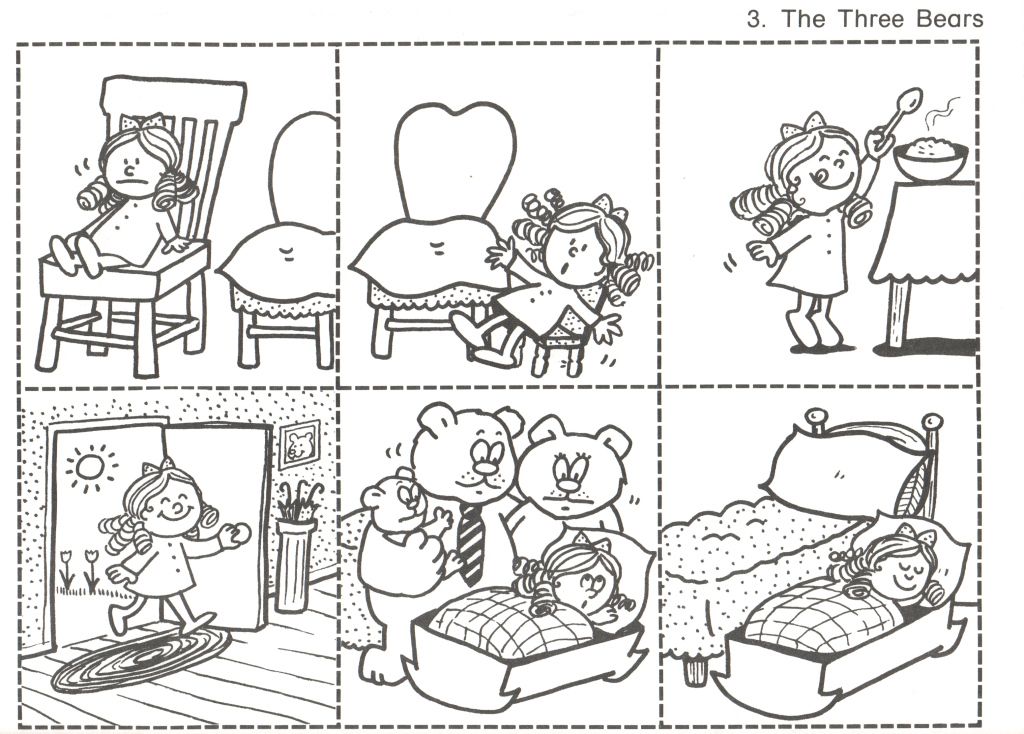 But she was an impudent, bad old Woman, and set about helping herself. nine0003
But she was an impudent, bad old Woman, and set about helping herself. nine0003
So first she tasted the porridge of the Great, Huge Bear, and that was too hot for her; and she said a bad word about that. And then she tasted the porridge of the Middle Bear, and that was too cold for her; and she said a bad word about that too. And then she went to the porridge of the Little, Small, Wee Bear, and tasted that; and that was neither too hot nor too cold, but just right; and she liked it so well she ate it all up: but the naughty old Woman said a bad word about the little porridgepot, because it did not hold enough for her. nine0013
Then the little old Woman sat down in the chair of the Great, Huge Bear, and that was too hard for her. And then she sat down in the chair of the Middle Bear, and that was too soft for her. And then she sat down in the chair of the Little, Small Wee Bear, and that was neither too hard nor too soft, but just right. So she seated herself in it and there she sat till the bottom of the chair came out, and down came hers, plump upon the ground. And the naughty old Woman said a wicked word about that too. nine0003
And the naughty old Woman said a wicked word about that too. nine0003
Then the little old Woman went up the stairs into the bed-chamber in which the Three Bears slept. And first she lay down upon the bed of the Great, Huge Bear; but that was too high at the head for her. And she lay down upon the bed of the Middle Bear; and that was too high at the foot for her. And then she lay down upon the bed of the Little, Small, Wee Bear; and that was neither too high at the head nor at the foot, but just right. So she covered herself up comfortably, and lay there till she fell fast asleep. nine0013 By this time the Three Bears thought their porridge would be cool enough; so they came home to breakfast. Now the little old Women had had left the spoon of the Great Huge Bear standing in his porridge.
"Somebody has been at my porridge!"
said the Great, Huge Bear, in his great, rough, gruff voice. and when the middle Bear looked at his he saw that the spoon was standng in it too. they were wooden spoons; If they had been silver ones, the naughty old Woman would have put them in her pocket. nine0013 "Somebody has been at my porridge!"
they were wooden spoons; If they had been silver ones, the naughty old Woman would have put them in her pocket. nine0013 "Somebody has been at my porridge!"
said the middle bear in his middle voice.
Then the Little, Small, Wee Bear looked at him, and there was the spooon in the porridge-pot, but the porridge was all gone.
"Somebody has been at my porridge, and has eaten it all up!"
said the Little, Small, Wee Bear, in his little, small, wee voice.
Upon this the Three Bears, seeing that some one had entered their house, and eaten up the Little, Small, Wee Bear's breakfast, began to look about them. Now the little old Woman had not put the hard cushion straight when she rose from the chair of the Great, Huge Bear. nine0013 "Somebody has been sitting in my chair!"
said the Great, Huge Bear, in his great, rough, gruff voice.
And the little old Woman had squatted down the soft cushion of the Middle Bear.
"Somebody has been sitting in my chair!"
said the Middle Bear, in his middle voice.
And you know what the little old Woman had done to the third chair.
"Somebody has been sitting in my chair, and has sat the bottom of it out!"
said the Little, small, Wee Bear, in his little, small, wee voice. nine0003
Then the Three Bears thought it necessary that they should make farther search; so they went, up the stairs into their bed-chamber. Now the little old. Woman had pulled the pillow of the Great, Huge Bear out of its place.
"Somebody has been lying in my bed!"
said the Great, Hugo Bear in his great, rough, gruff voice
And the little old Woman had pulled the bolster of the Middle Bear out of its place.
"Somebody has been lying in my bed!"
said the Middle Bear, in his middle voice. nine0003
And when the Little, Small, Wee Bear came to look at his bed, there was the bolster in its place; and the pillow in its place upon the bolster; and upon the pillow was the little old Woman's ugly, dirty head - which was not in its place, for she had no business there.
"Somebody has been lying in my bed and here she is!"
said the Little, Small, Wee Bear, in his little, small, wee voice.
The little old Woman had heard in her sleep the great, rough, gruff voice of the Great Huge Bear; but she was so fast asleep that it was no more to her than the roaring of wind or the rumbling of thunder. And she had heard the middle voice of the Middle Bear, but it was only as if she had heard some one speaking in a dream. But when she heard the little, small, wee voice of the Little, Small, Wee Bear, it was so sharp and so shrill that it awakened her at once. Up she started; and when she saw the Three Bears on one side of the bed, she tumbled herself out at the other, and ran to the window. nine0013
Now the window was open, because the Bears, like good, tidy Bears, as they were, always opened their bed-chamber window when they got up in the morning. Out the little old Woman jumped; and whether she broke her neck in the fall, or ran into the wood and was lost them, or found her way out of the wood and was taken up by the constable and sent to the House of Correction for a vagrant as she was, I can't tell.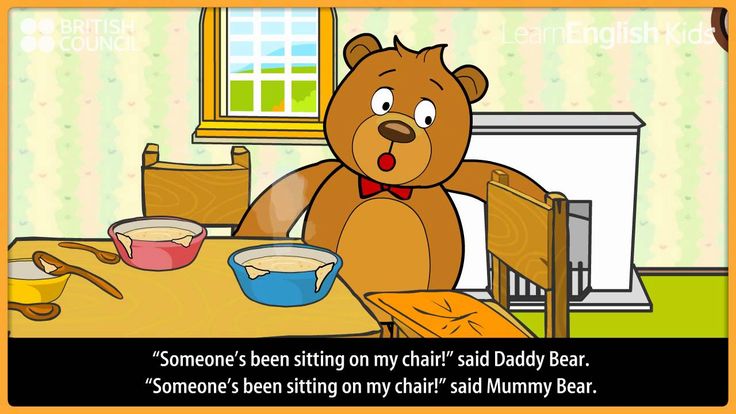 But the Three Bears never saw any thing more of her.
But the Three Bears never saw any thing more of her.
Children's Stories Index
Phonics Index.
Phonics Rules
Ordering PHONICS RULES Tee Shirts
Slate Work.
Sir Buxton Story.
Three bears. English folk tale translated by N. Shereshevskaya.
Even before publication in 1837, Southey told his version of the tale to friends and acquaintances. In 1831, Eleanor Muir translated the tale she had heard into verse and presented it in a handwritten album to her nephew Horace Brock for his birthday. Eleanor Muir's version turned out and remained the most bloodthirsty in the history of the plot. In all other versions, a fox, an old woman or a girl flees through the window and nothing is said about their further fate. In Muir, an old woman jumps out the window of a high-rise building in Rome and impales herself on the spire of St. Paul's Cathedral. nine0003
An important step in bringing the fairy tale to a modern look was made by the English writer Joseph Candall (English) Russian.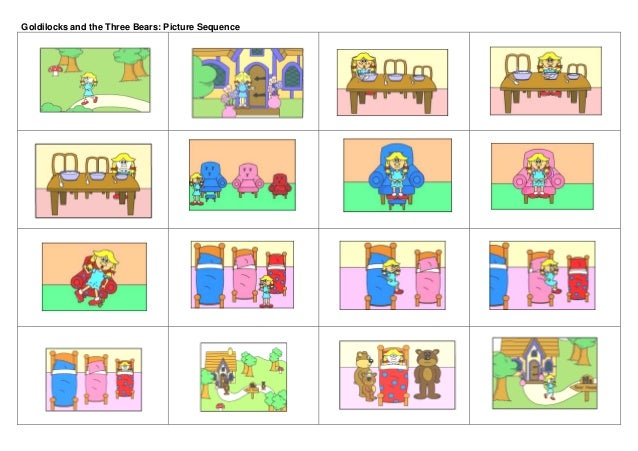 In 1850, his Treasury of Pleasure Books for Young Children was published [7] . In his version of The Three Bears, a little girl becomes the hero, and any motive of hooliganism is removed: the girl tries to eat and sleep, simply because she got lost in the forest, tired and hungry. True, the girl's name is not Goldilocks yet, but Silver-Hair. In the preface, Candall explained his choice[6] as follows:
In 1850, his Treasury of Pleasure Books for Young Children was published [7] . In his version of The Three Bears, a little girl becomes the hero, and any motive of hooliganism is removed: the girl tries to eat and sleep, simply because she got lost in the forest, tired and hungry. True, the girl's name is not Goldilocks yet, but Silver-Hair. In the preface, Candall explained his choice[6] as follows:
"The Tale of the Three Bears" is a very old tale, but it has never been told so well by anyone as by the great poet Southey, whose version (with his permission) I am sharing with you. Only a little girl invades my house, not an old woman. I did this because I find the Silver-Haired version better known, and because there are already so many other stories about old women.
Original text (English)
[hide]
The "Story of the Three Bears" is a very old Nursery Tale, but it was never so well told as by the great poet Southey, whose version I have (with permission) given you, only I have made the intruder a little girl instead of an old woman. This I did because I found that the tale is better known with Silver-Hair, and because there are so many other stories of old women. nine0003
This I did because I found that the tale is better known with Silver-Hair, and because there are so many other stories of old women. nine0003
After appearing in a new form, the heroine often changed names depending on publications. At first, her hair color was silver: Silver-Hair (1850), Silver-Locks (1858), Silverhair (1867). From the 1868 edition, the hair color changed and the girl became Goldilocks (Golden Hair) in the Goldilocks version, which was finally established from the 1904 edition (literally Golden-haired, or, keeping the diminutive from the original, Golden Curls).
Goldilocks and Three Bears
In Russia, the fairy tale appeared and quickly became popular in the retelling and adaptation of Leo Tolstoy. His name is simply “one girl”, however, in the English versions at the end of the 19th century, the final name has not yet been settled. But all three bears get names: the father's name is Mikhail Ivanovich, his wife Nastasya Petrovna, and their little son Mishutka.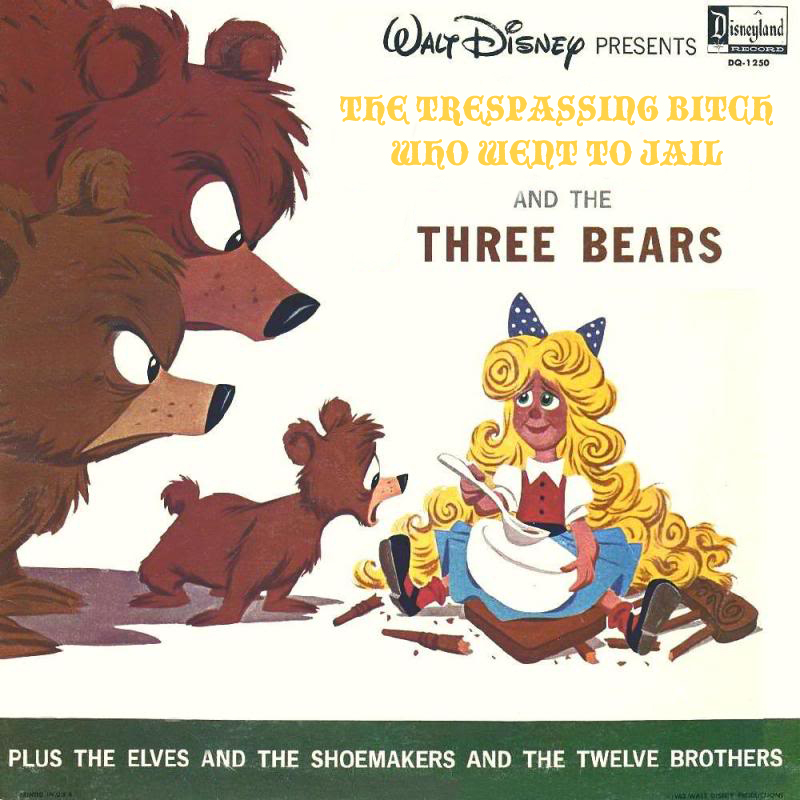 nine0003
nine0003
Fairy tale Three Bears
One girl left home for the forest. She got lost in the forest and began to look for her way home, but she did not find it, but came to the house in the forest.
The door was open: she looked through the door, saw that there was no one in the house, and entered.
Three bears lived in this house. One bear was a father, his name was Mikhail Ivanovich. He was big and shaggy. The other was a bear. She was smaller, and her name was Nastasya Petrovna. The third was a little bear cub, and his name was Mishutka. The bears were not at home, they went for a walk in the forest. nine0003
There were two rooms in the house: one was a dining room, the other was a bedroom.
The girl entered the dining room and saw three cups of stew on the table. The first cup, very large, was Mikhail Ivanovich's. The second cup, smaller, was Nastasya Petrovnina. The third, little blue cup, was Mishutkin. Beside each cup lay a spoon: large, medium and small.
The girl took the biggest spoon and drank from the biggest cup; then she took the middle spoon and drank from the middle cup; then she took a small spoon and drank from a little blue cup, and Mishutka's stew seemed to her the best of all. nine0003
The girl wants to sit down and sees three chairs by the table: one large one for Mikhail Ivanovich, another smaller one for Nastasya Petrovnin, and a third, small one with a little blue cushion for Mishutkin.
She climbed onto a large chair and fell down; then she sat down on the middle chair, it was awkward on it; then she sat down on a small chair and laughed—it was so good. She took the little blue cup on her knees and began to eat. She ate all the stew and began to swing on a chair.
The chair broke and she fell to the floor. She got up, picked up a chair and went to another room. There were three beds: one large - Mikhail Ivanycheva, another medium - Nastasya Petrovnina, and the third small - Mishenkina.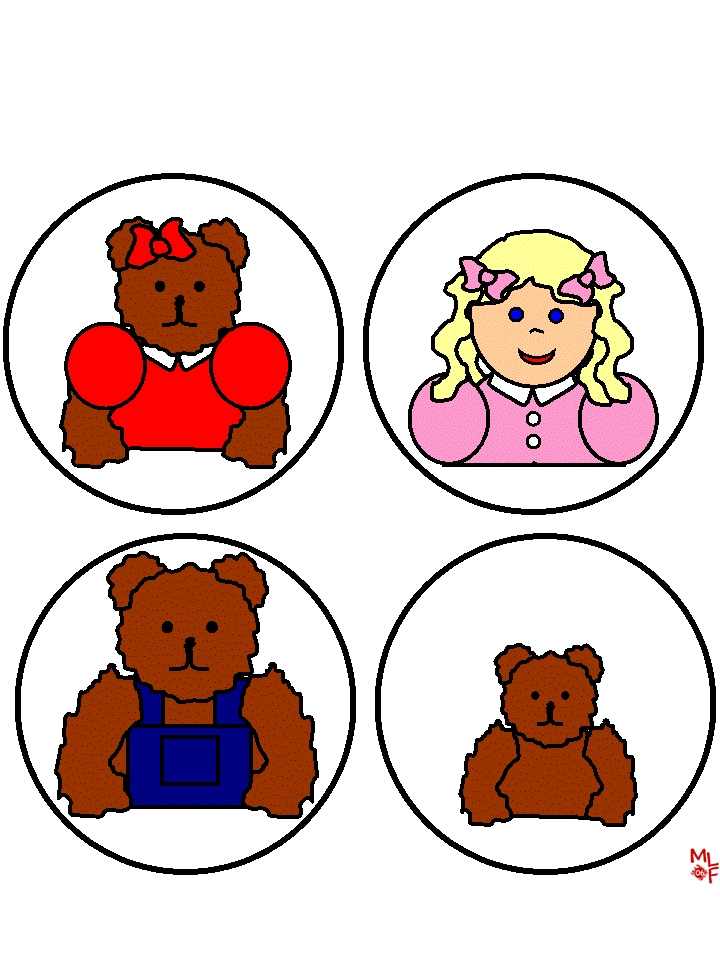 nine0003
nine0003
The girl lay down in the big bed - it was too spacious for her; lay down in the middle - it was too high; she lay down in the little one - the bed fit her just right, and she fell asleep.
And the bears came home hungry and wanted to have dinner.
The big bear took his cup, looked and roared in a terrible voice:
- WHO SUCKED IN MY CUP!
Nastasya Petrovna looked at her cup and roared not so loudly:
— WHO SUCKED IN MY CUP! nine0003
And Mishutka saw his empty cup and squeaked in a thin voice:
— Who sipped in my cup and drank everything!
Mikhail Ivanych looked at his chair and growled in a terrible voice:
- WHO WERE SITTING ON MY CHAIR AND PUSHED IT FROM THE PLACE!
Nastasya Petrovna looked at her chair and growled not so loudly:
- WHO WERE SITTING ON MY CHAIR AND PUSHED IT FROM THE PLACE!
Mishutka looked at his broken chair and squeaked:
- Who was sitting on my chair and broke it!
- WHO LEG IN MY BED AND CRUSHED IT! roared Mikhailo Ivanovich in a terrible voice.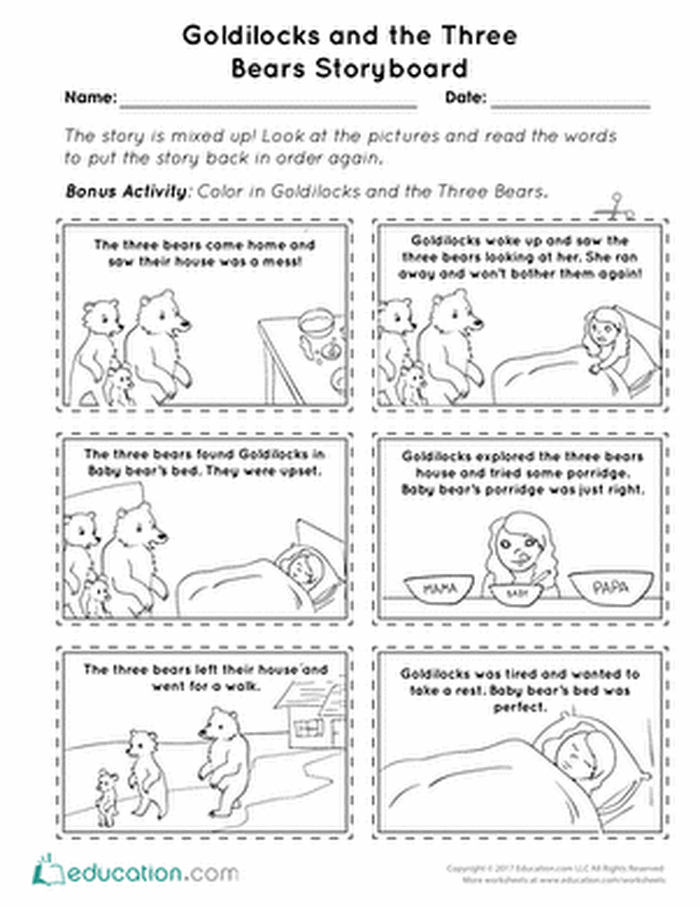
- WHO LIE IN MY BED AND CRUSHED IT! - Nastasya Petrovna growled not so loudly.
And Mishenka set up a little bench, climbed into his bed and squealed in a thin voice:
— Who got into my bed!
And suddenly he saw a girl and squealed as if he was being cut:
— There she is! Hold it, hold it! Here she is! Here she is! Ay-yay! Hold on! He wanted to bite her. The girl opened her eyes, saw the bears and rushed to the window. The window was open, she jumped out the window and ran away. And the bears did not catch up with her. nine0003
The Adventures of a Girl and the Three Bears: aneitis - LiveJournal
The tale of the three bears was first published in 1837 in the collection "The Doctor" in a literary adaptation of the English writer and poet Robert Southey under the title "The Story of the Three Bears".Bears - large, medium and small - were not a family in this story, but simply three friends who lived together. But the most interesting thing is that the intruder who invaded their house was not a little girl at all, but a disgusting dirty old woman.
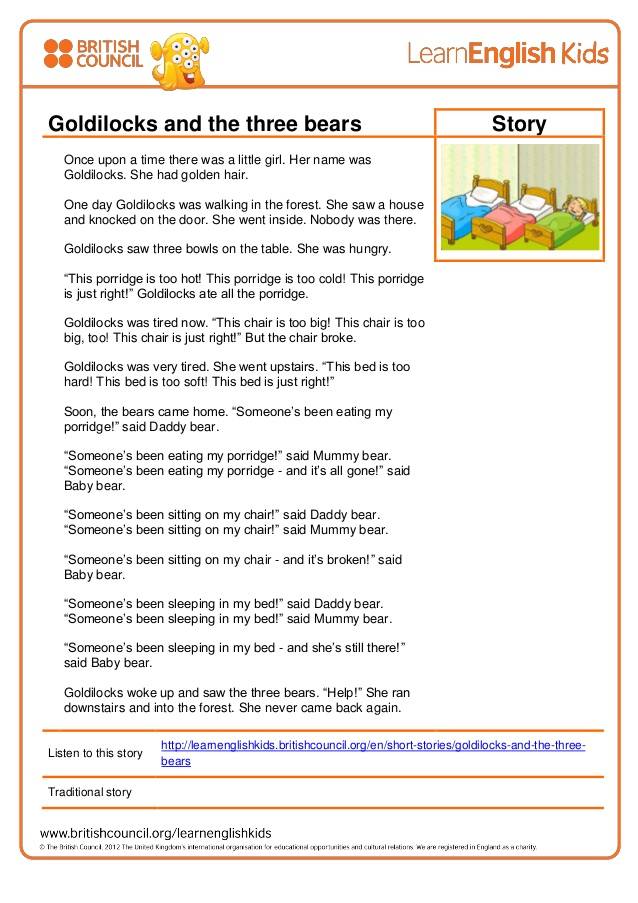 nine0004 x
nine0004 x The idea of using different font sizes to convey the different heights and strengths of the voice of the bears belongs to Southey. Here is a copy of the first edition of The Doctor from Chatham's library, with notes and corrections by Southey himself and his son-in-law John Wood Worter: He comes up with funny names for them and describes them as good-natured, respectable and tidy owners, whose quiet life is rudely disturbed by the intrusion of an insolent tramp. Southey does not skimp on details designed to arouse the reader's dislike for the offender: a dirty and ugly old woman not only illegally enters the house of harmless gullible bears and makes a mess there, but also swears disgustingly. At the end of the tale, she is given a very harsh alternative: if she did not break her neck by jumping out of the window and perish in the forest, then she was undoubtedly captured by the constable and sent to the House of Correction. nine0003
However, this is not the most cruel version.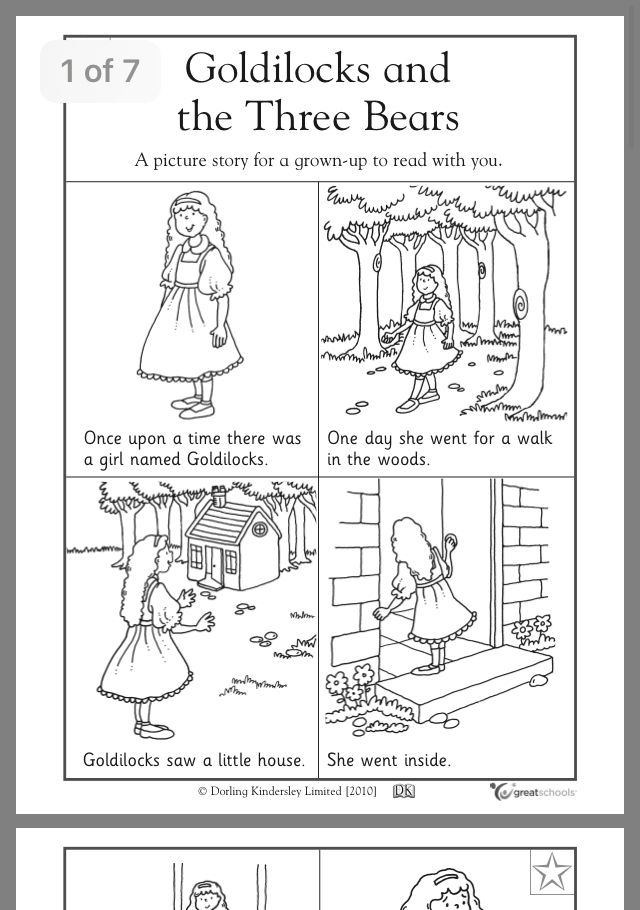 The Toronto Public Library holds Eleanor Muir's handwritten watercolor sketchbook, given as a four-year gift to her nephew Horace Broke. The manuscript is dated 1831 and contains the original interpretation of "The Story of the Three Bears" in verse. It is believed that Eleanor learned the tale from Southey, but creatively reworked it. Three bears, tired of the wild forest life in an undeveloped lair, move to the city and buy a house. What follows is a familiar story. nine0003
The Toronto Public Library holds Eleanor Muir's handwritten watercolor sketchbook, given as a four-year gift to her nephew Horace Broke. The manuscript is dated 1831 and contains the original interpretation of "The Story of the Three Bears" in verse. It is believed that Eleanor learned the tale from Southey, but creatively reworked it. Three bears, tired of the wild forest life in an undeveloped lair, move to the city and buy a house. What follows is a familiar story. nine0003
Bears in this, we recall, female version, are distinguished by terrible bloodthirstiness. Having seized the criminal old woman, they decide to put her to a cruel death. At first, the bears make unsuccessful attempts to burn and drown the unfortunate woman, but she turns out to be unusually stable - she does not burn in fire and does not sink in water. Then, in front of the astonished audience, they throw the old woman up, and she sits on the steeple of the bell tower of St. Paul's Cathedral:
On the fire they throw her, but burn her they couldn't,
In the water they put her, but drown there she wouldn't.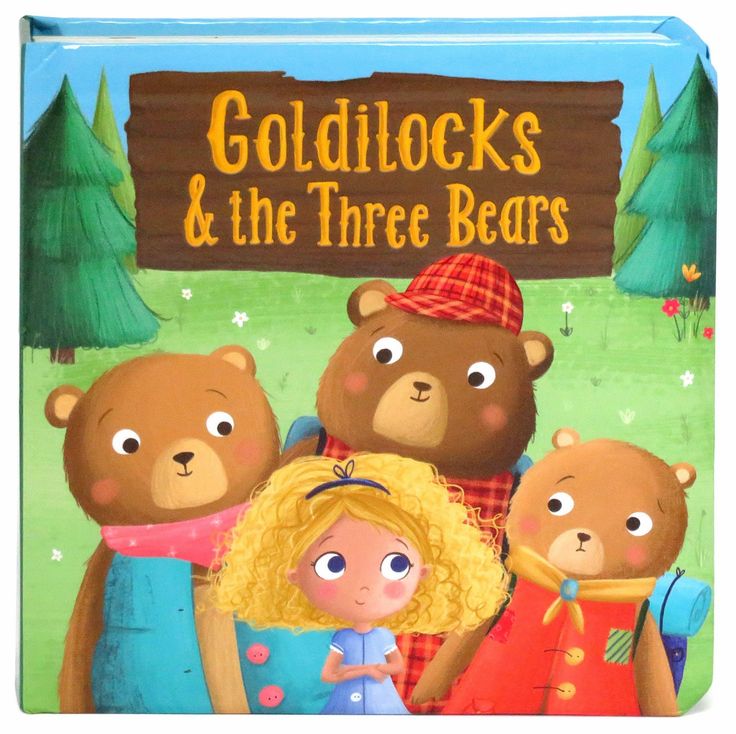
They seize her before all the wondering people
And chuck her aloft on St Paul's church-yard steeple.
х
х
First, the old woman is thrown into the fireplace:
х
This watercolor, as one might assume, depicts an attempted drowning:
х
I don’t know what destructive tendencies little Horace was that it seemed necessary to a caring aunt to frighten him with such horrors. Modern psychologists would no doubt anathematize it. nine0003
Southey's version seems to solve the mystery of the appearance of an intruder at the bears' forest home: the wanderings of a homeless old woman look more natural than the lonely walks of a little girl. However, it highlights a new problem: why in this tale a pronounced negative character is embodied in a human form, while positive characters, in whom the features of peaceful villagers rather than wild animals are guessed, appear in the form of bears?
Be that as it may, it is clear that no "initiations" or other mythical subtexts can be found in this story.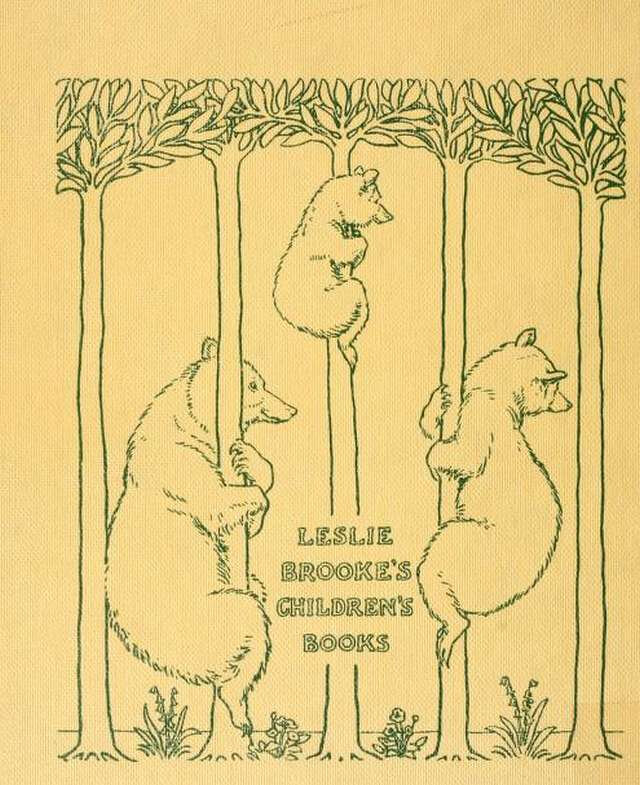 The pathos of Southey's tale is completely aimed at protecting the private property of respectable inhabitants from the encroachments of marginal elements. nine0003
The pathos of Southey's tale is completely aimed at protecting the private property of respectable inhabitants from the encroachments of marginal elements. nine0003
But this effect was almost destroyed after only 12 years, when the English writer Joseph Candall included "The Tale of the Three Bears" in the collection "Treasury of Pleasure Books for Young Children", while making some changes:
""The Tale of the Three bears" is a very old tale, but it was never told so well by anyone as by the great poet Southey, whose version (with his permission) I share with you. Only it is a little girl who invades my house, not an old woman. I did so, because I find the Silver-haired version better known, and because there are already so many other stories about old women." (x)
All negative characteristics of the intruder have been purged from the text, leaving only the instructive remark "If she were a good little girl, she would have waited until the bears came home." And, of course, she doesn't swear like a bad old woman.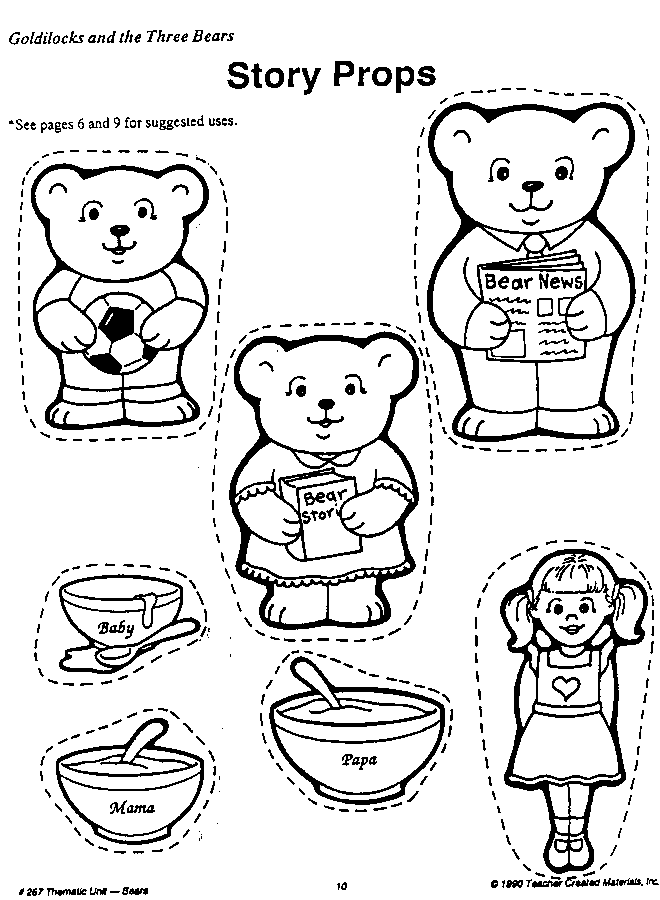
Artist Harrison Weir, illustrations hand-coloured:
"Silverweather's pretty head lay on the pillow - and it was out of place, because there was nothing for it to do there." nine0003
The end of the tale takes on the brevity we know: "Our little Silverhair jumped out of the window and ran into the woods, and the bears never saw her again." This is how the fairy tale ends with Tolstoy.
Another puzzling detail. Tolstoy and Spirin say: "the girl went to another room ..." (bedroom). But in the English original, it is clearly stated everywhere that the old woman or girl "went upstairs to the bedroom." The bears were wealthy, their house was two-story, and the bedroom, as usual, was located on the second floor. It turns out that both the old woman and Silverweasel had amazing parkour training, and it didn’t cost them anything to jump out the window from a full-fledged second floor like that! In cartoons, by the way, this moment is often removed, and the girl simply runs down the stairs while the dumbfounded bears stand with their mittens open.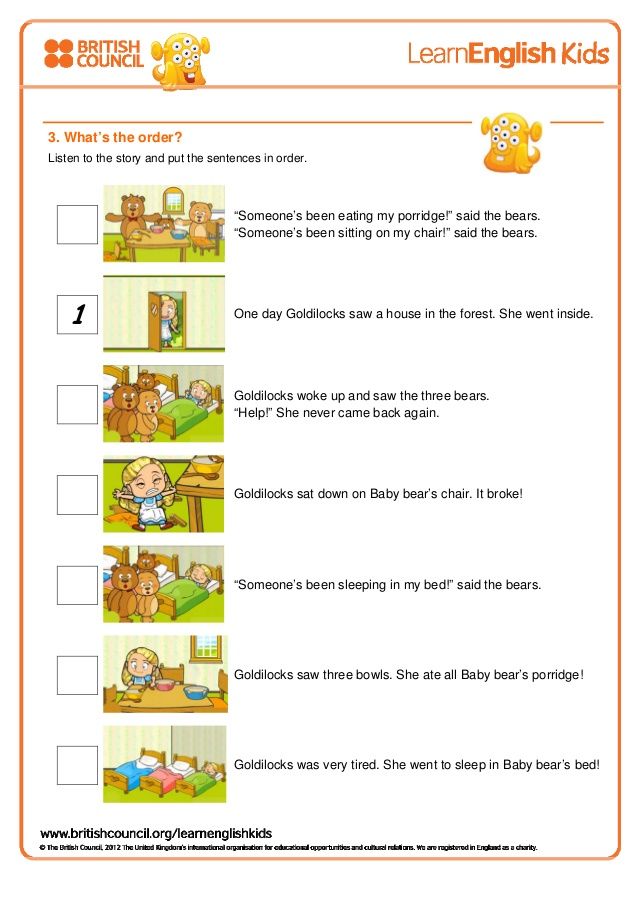 nine0003
nine0003
It is believed that in the girl's silver hair color there was still a hint of the old woman's gray hair, but over time she turned into Goldilocks (Golden Hair in the 1868 edition; from 1904 the name Goldilocks was assigned to her - Golden curls).
Along the way, the situation with the bears changed in a curious way.
According to Wikipedia, in the illustration for the fairy tale "Three Bears" in the book "Aunt Fanny's Stories", published in 1852, bears were first depicted as a family (father, mother and son), although there is no hint of this in the text - moreover, the bears generally live separately there, each in his own house of the appropriate size. But in the digitized version there is no illustration for this tale (perhaps the pasted sheet with the illustration in the copy from which the digitization was made was lost). But there is a funny note under the asterisk: it is recommended to read the tale aloud with appropriate voice changes when the narrator reads on behalf of the bears.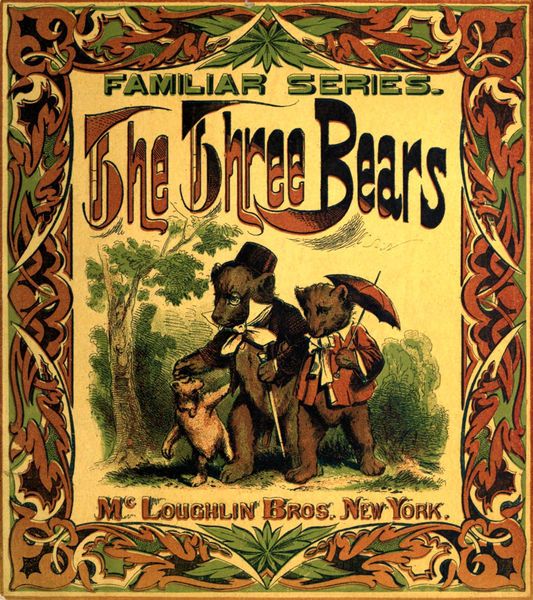 nine0003
nine0003
Here again the bears are invaded not by a girl, but by a dirty ragged old woman. Entering first into the largest house, she restricts herself to tasting porridge, then goes to the middle house standing next to it, and finally, to the small one. There she creates further outrages. Thus, the chairs and beds of the big and medium bears remain intact, and all the ruin falls to the share of the small bear. He becomes furious and calls his neighbors; the three of them go up to the bedroom and find an old woman there with a mouth stained with porridge, who "snored like a trumpeter". Waking up and seeing three bears, the old woman "feared mad" and jumped out the open window near the bed. nine0003
In this version, the bears are no longer as graciously depicted as in Southey: they roll head over heels down the stairs at breakneck speed and try to catch up with the old woman, intending to eat her, but they do not succeed because they were too fat and could not run as fast as a brisk old ragamuffin, who was only slightly out of breath, but remained unharmed)
There is a version in which two big bears are brother and sister and are friends with a small bear. But in the end, in 1860, they turn into a traditional family: father bear, mother bear and little bear son. In this form, the tale is borrowed by Leo Tolstoy. nine0003
But in the end, in 1860, they turn into a traditional family: father bear, mother bear and little bear son. In this form, the tale is borrowed by Leo Tolstoy. nine0003
What was the source of the story told by Robert Southey?
In 1894 More English Fairy Tales was published with illustrations by John D. Batten. The author of the collection, folklorist Joseph Jacobs, believed that one of the tales included in it, which Batten told him, is the original oral version of The Story of the Three Bears.
x
In this Scottish tale, it is not a girl or an old woman who invades the bears' house, but suddenly a fox named Scrapefoot (Scrapefoot). He does it out of pure curiosity. nine0003
Here the bears appear not as good-natured bumpkins, but formidable masters of the forest, they even live not just in a house, but in a castle. The fox is very afraid of them, but curiosity still overpowers, and making sure that the bears are not at home, he carefully climbs inside.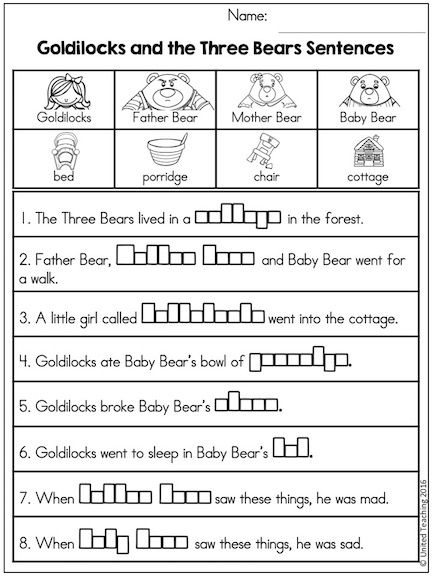 And then everything goes according to the known scheme.
And then everything goes according to the known scheme.
When the bears discover the insolent, they wonder what to do with him. The big bear offers to hang it, the middle one - to drown it, and the small one - to simply throw it out of the window, which they do, apparently deciding that this is the least energy-consuming way. nine0003
As you can see from the title, in this version the main character is a fox. The bears here are impersonal and practically devoid of characteristics (with the exception of size), their actions are said extremely sparingly: they lived, came home, entered the hall, said, began to think what to do with it. But everything that concerns the fox is described so vividly and funny that it is impossible not to sympathize with this frivolous prankster. Before the reader's eyes there are hilarious pictures: how he looks around to make sure there is no one nearby; how he sneaks up to the doors and, finding to his joy that they are not locked, cautiously sticks his nose in there, and then his paws - one at a time; how he turns on uncomfortable seats and beds; how he tries to collect a collapsed chair; how he forgets about caution, roaring in warmth and comfort.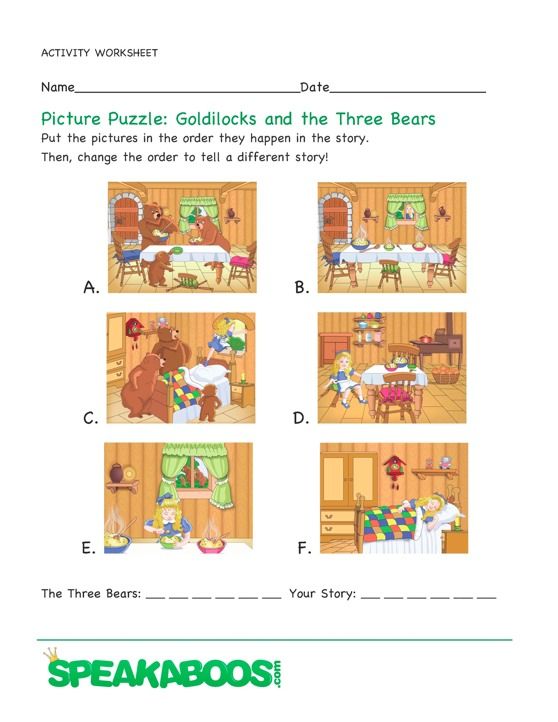 In the finale, the poor fellow shakes his paws in horror to make sure that they are not broken, and flies home with all his might. The adventure ended relatively well for him, but he is so frightened that he no longer thinks of approaching the bear's house. nine0003
In the finale, the poor fellow shakes his paws in horror to make sure that they are not broken, and flies home with all his might. The adventure ended relatively well for him, but he is so frightened that he no longer thinks of approaching the bear's house. nine0003
The last mystery remains: how did the fox turn into an untidy little old woman?
It has been established that Robert Southey might have heard the story of the fox and the bears as a child from his uncle William Tyler, who was an excellent storyteller and excellent at imitating animal voices (it is possible that Southey recalled his lively manner when he tried to convey the difference in the voices of bears in type). If Tyler was telling a fairy tale that featured not a fox, but a fox - vixen, then little Robert could understand this word in its figurative meaning - a grumpy woman. The riddle of the old parkour woman is also resolved: having made the bears unambiguously positive characters, Southey could no longer make them throw the old woman out of the window, despite all her sins, and she, and after her and the girl who replaced her, had to jump from the second floor on their own.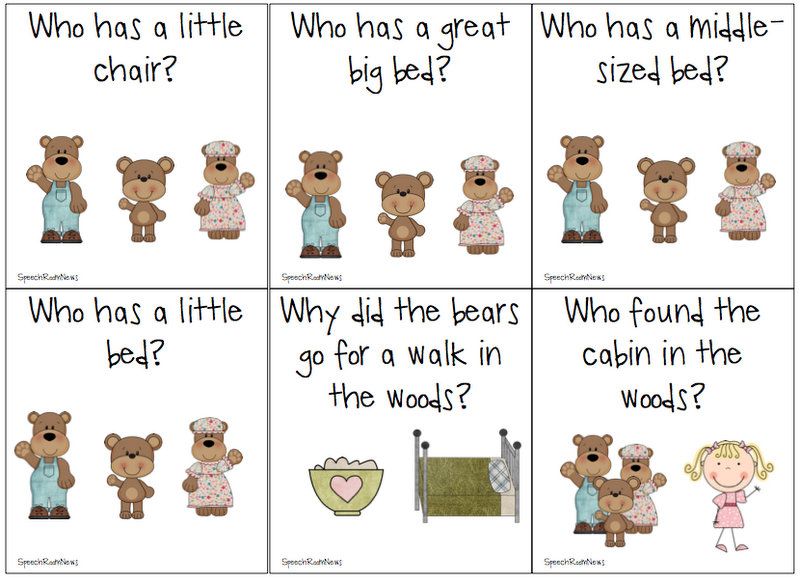 nine0003
nine0003
Thus everything falls into place. Initially, this is a fairy tale about a rogue and a rogue fox, who gets into trouble, but successfully gets out of them, quite in line with the folklore tradition. Southey pretty much reworked it, shifting the focus and turning it into an edifying story with a clear emphasis on positive and negative characters. Replacing the unpleasant old woman with a little girl returned an intriguing ambivalence to the tale: despite sympathy for the affected bear family, especially the little bear cub, readers cannot but empathize with the ill-mannered girl - after all, she is just a child who got into trouble due to inexperience. nine0003
Finally, there is one more interesting point in this tale, which Western researchers have long paid attention to. When a girl tries porridge, in the first bowl it turns out to be too hot, in the second - too cold, and only in the third, small - not hot and not cold, but "just right" - "just right". Although it would seem that porridge poured into bowls at the same time should cool at about the same speed. But the matter is in principle, which also works with other objects: one chair turns out to be too hard, the second one is too soft, and only the third, small one, is just right. The same thing happens with beds. nine0003
But the matter is in principle, which also works with other objects: one chair turns out to be too hard, the second one is too soft, and only the third, small one, is just right. The same thing happens with beds. nine0003
This effect of the greatest comfort of an average object is called the Goldilocks principle. It is used in various fields of many sciences: economics, medicine, astrobiology, psychology, communication theory. For example, in order for the planet to have favorable conditions for the emergence of life, it should not be too close or too far from the star, but at a distance that will be just right. This principle is used in teaching: in order for children, and adults too, to maintain the highest level of interest, new knowledge must be introduced in moderate portions. No one is interested in chewing on what has already been learned, but even completely unfamiliar material can scare away, seem too complicated and incomprehensible, so the new is given by elements based on the well-known.